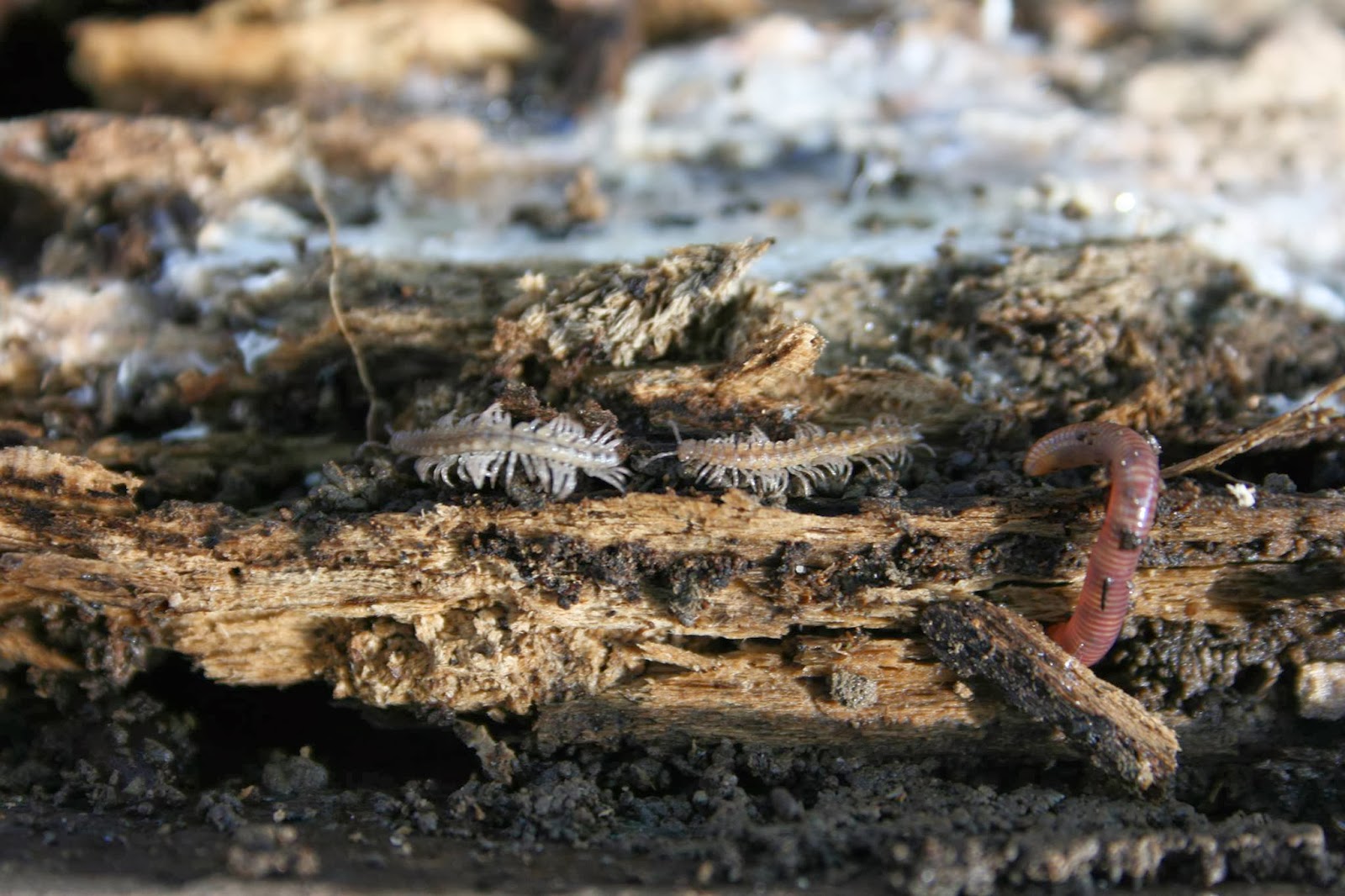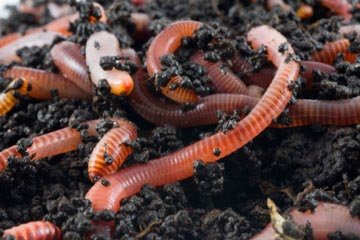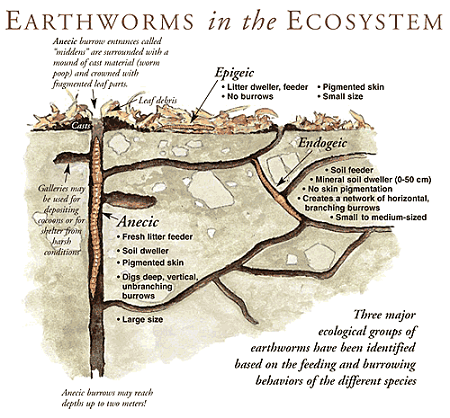Garden Allies - The "Megadriles"
During this series of posts we will be looking at a range of beneficial organisms commonly known as bugs, critters or creepy crawlies, that can contribute to a healthy, productive and pest free growing environment in your temperate garden. As well as identifying key species that serve as allies to our efforts in the garden, we will look at ways to attract and keep these organisms around.
"It may be doubted whether there are any other animals which have played such an important part in the history of the world as these lowly organized organisms." Charles Darwin (1881)
Old Charlie boy is not referring to the environmental activist but to animals belonging to the order Megadrilacea, the earthworms :)

So why are Worms so important and what makes them a garden ally?
There are many species of earthworms on our planet, each specie specially adapted to particular soils and particular areas of the soil. Their chief role is that of the decomposer, keeping nutrients flowing through life and death, but all play other very important roles in our ecosystems.
Plumbing and Ventilation
Worms spend most of their life tunnelling through the soil. In a healthy soil the top 20 cm or so contains an extensive network of such tunnels created by the worms. This is also the layer of soil that contains the majority of plant roots. Plant roots need a good supply of oxygen to maintain growth and the worm tunnels allow air to circulate freely among the roots ensuring a good supply. At the same time the tunnels allow the delivery of rain water into the root zone whilst allowing the excess water to drain away.
As well as helping the plant roots directly, this aeration encourages the decay of dead material which releases nitrates and other plant nutrients into the soil.
Mining and Redistribution of Minerals
Certain worms are active deeper than the top 20cm of the soil. This deeper tunnelling provides another major contribution of the earth worm. Their vertical movement through the soil can bring nutrients washed deep into the soil by rainwater, where they are unavailable to the majority of plant roots, to upper levels within reach of the plant roots.
Fertilisers
The worm casts that are often seen on the surface of the soil are also deposited throughout the soil profile. These castings are rich in minerals. In fact, the worm castings are of such benefit to plant growth, that breeding worms to harvest these castings has become a very successful biological method of supplying fertiliser, known as vermicomposting. Some of the benefits of vermicompost include,
Microbial activity in vermicompost is 10 to 20 times higher than in the soil and organic matter that the worm ingests. This microbial activity ultimately provides mineral nutrients to plants.
Improves water holding capacity of the soil
Enhances seed germination, plant growth, and crop yield
Improves root growth and structure

Eisenia fetida
I use worm castings mixed with river sand 50/50 for the nursery plants we produce here. Its a great medium providing water retention, slow release fertilisation and keeps the young plants healthy and pest free.
Where you will find worms in your garden ecosystem.
There are some 3000+ named species of earthworm on this planet, researchers have broken them into three categories, largely descriptive of their habits in the soil. These three categories are Endogeic, Anecic and Epigeic.

Endogeic worms build complex lateral burrow systems through all layers of the upper mineral soil. These worms rarely come to the surface, instead spend their lives in these burrow systems where they feed on decayed organic matter and bits of mineral soil. They are the only category of worm which actually eat SOIL and not strictly the organic component. Endogeic worms tend to be medium sized and pale coloured and make great miners and re-distributors of valuable plant minerals
Anecic worms such as Lumbricus terrestris build permanent, vertical burrows that extend from the soil surface down through the mineral soil layer. It is not unusual for these burrows to reach a depth of 2 meters or more. The anecic species feed in decaying surface litter, so come to the soil surface regularly, which leaves them exposed to predators. These worms require a stable burrow environment in order to thrive. In the absence of this burrow, anecic worms will neither breed nor grow. There deep burrows contribute greatly to the redistribution of plant minerals
Epigeic worm are the guys used in vermicomposting systems, like Eisenia fetida. In nature epigeic worms live and feed in the top soil and duff layer on the soil surface. These small, deeply pigmented worms have a poor burrowing ability, preferring instead an environment of loose organic litter or loose topsoil rich in organic matter.
How to encourage earthworms
Worms like the type of soil that the majority of our fruit and vegetable crops like i.e not too acidic, not too alkaline, moist but not bone dry or sopping wet. If your soil is of moderate pH and moistness you will almost certainly have a healthy population already. If you do not have many earthworms in your soil, introduce some of the practices described below. It is surprising how quickly they build up in favourable conditions.
Have plenty of worm food available
Many worms eat dead or decaying plant remains, including straw, leaf litter and dead roots and will breed exponentially in the presence of such organic matter. Applying these materials to the surface of the soil i.e mulching, will increase your populations. Leaving the stubble and roots of annual plants to rot down in the soil will provide a good source of food. Permanent pasture such as a lawn provides plenty of organic matter as leaves and roots die and decay, worms love this kind of habitat.
Animal manure is also an attractive food for many species of earthworms. A pile of animal manure is a great way of attracting and breeding up worm populations in your garden. You may have to wait 3 months or more if using fresh manure before the worms start to move in.
Do not use fertilisers and fungicides
Highly acidifying fertilisers such as ammonium sulfate and some fungicides reduce worm numbers. Researchers have found that orchards sprayed with bordeaux or other copper sprays contain few earthworms.
Keep soil moist
Worms can lose 20% of their body weight each day in mucus and castings, so they need moisture to stay alive. Ground cover such as pasture or shrubs and herbs reduce moisture evaporation as will applying mulch to the surface. In dry times some species burrow deep into the soil and are inactive until rain 'reactivates' them. Having a good steady supply of organic matter cycling through your soil and building humus will also provide higher water retentive properties in the soil.
Reduce soil compaction
It is difficult for earthworms to move through heavily compacted soil and no tread beds are a great way to avoid compaction. On larger sites it is necessary to keep vehicle and animal traffic to a minimum, especially in wet conditions.
Reduce cultivation
Digging the soil is obviously going to create disturbance and stress for our elongated comrades. No dig gardening , no till or minimal till agricultural practices are all excellent ways to keep the megadrilles around and happy. Researchers have found that after four years, zero-tilled paddocks had twice as many worms as cultivated soils. However, shallow cultivation may not affect worm numbers.